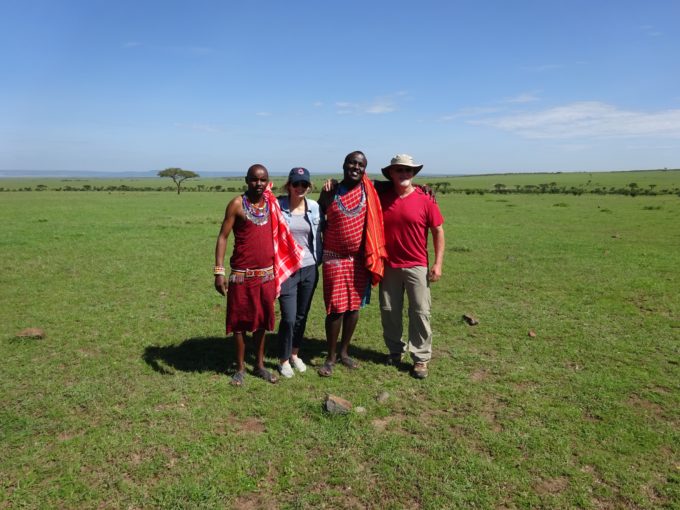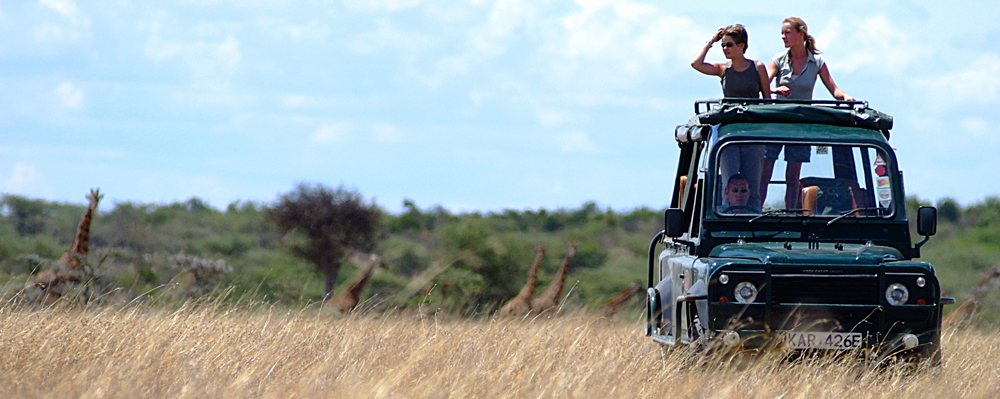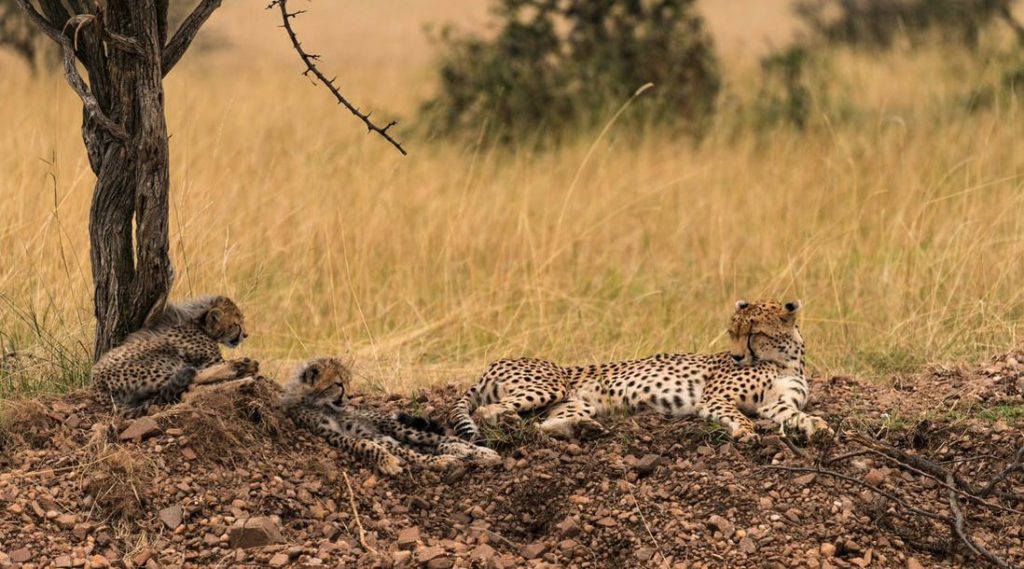
Guest Clinton Richardson gets to know the Maasai and observe life around Nanyuki during an unscheduled yet interesting detour between camps …
* * * * * * * * * * * * * * * * * * * * * * * *
This series of blogs will take you on Clinton’s safari in Kenya as he travels from Atlanta (USA) to Nairobi National Park, Selenkay Conservancy (Amboseli), Ol Pejeta Conservancy (Laikipia) and Olare Motorogi Conservancy (Maasai Mara). Let’s join him on his journey as he shares his insights into the conservancies, Porini Camps and the people (and animals!) that he meets along the way. All images are from Clinton’s TrekPic.com photo site. Blog entries are from his Venture Moola blog at ReadJanus.com.
* * * * * * * * * * * * * * * * * * * * * * * *
There was no game drive on our last morning at Rhino Camp. Instead, we and two other guests were headed to Lion Camp in the Maasai Mara by way of Land Cruiser and small plane. The rains had made the nearby grass airstrip unusable, so we had a 90-minute drive ahead of us to reach our plane’s new departure destination in Nanyuki.
By 8:00 a.m. we were off in a fully loaded safari vehicle with our driver, spotter, camp director and one other. The morning air was crisp as we headed off. We quickly passed the airstrip we landed on just days earlier and continued driving on dirt roads for a full 40 minutes until we reached the gates of the conservancy.
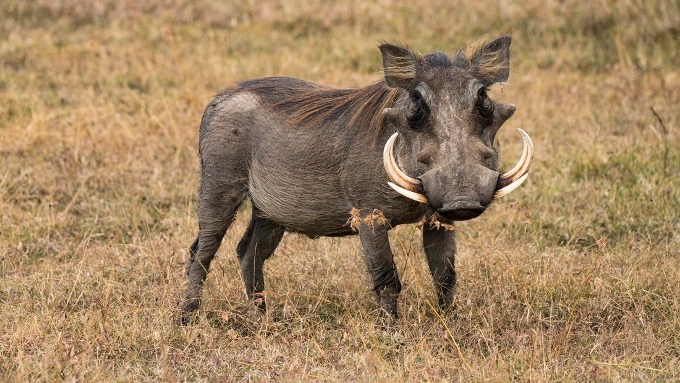
An Ol Pejeta Resident Says Goodbye
From there, we continued on a wider dirt road that eventually became paved. We began to see people on the roadside and the occasional one-story building. Most people were walking but as we drove on we saw some cars and motorcycles and goats. Most of the children were in school uniforms and most buildings had hand painted signs.
As we got close to the city, the streets and buildings got more elaborate. Billboards appeared next to a four lane road we turned onto. One described a local bank as “the bank for interesting people.” We turned off the four-lane road before reaching Nanyuki to make our way to the airport. After finding a closed gate where we hoped to enter the airport, we doubled back for route two.
This route took us through a gated animal club with a tree lined road that led to another gate through the club’s animal orphanage where we saw young cape buffalo, hippo, ostrich and other animals. When we reached the back gate of the club, we found ourselves on a dirt path that paralleled a black asphalt runway. Soon we were waiting on the tarmac near the plane.
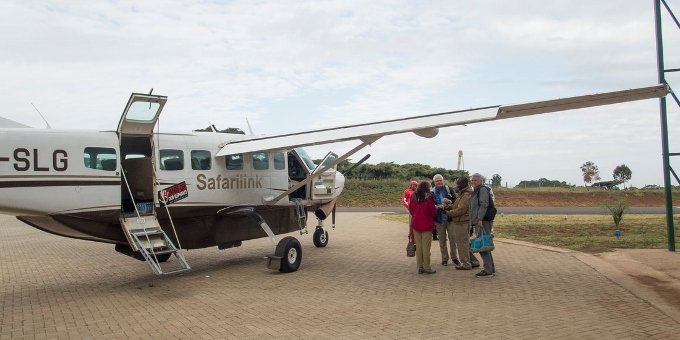
Our Transportation Over the Great Rift Valley
We said our goodbyes to our hosts and exchanged stories. While we were waiting for passengers from another outfitter, our driver made his way into the cockpit to check out the plane. Had he flown before?
When we asked, he straightened his body and jumped straight in the air like the Maasai warrior he was. “Only like this,” he said.
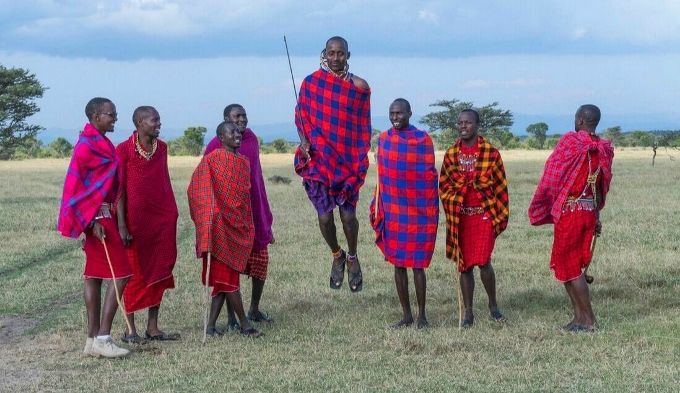
A Maasai Warrior Jump
Of course the jump looked different on the tarmac with our driver in a leather jacket and jeans standing in front of an airplane. The traditional Maassai culture that is rooted in village life and dependence on cattle is still very much alive in Kenya. The Maasai we met in the camps and as we traveled are caught between two worlds and many are working thoughtfully to adjust.
Never was this more apparent than when a Canadian guest posed a simple question to the driver and spotter who picked us up from the airplane in the Maasai Mara to take us to the Lion Camp.
“How many wives would you like to have?” She asked.
Our driver and spotter both appeared to be in their late 20s or early 30s and both were dressed, as the gentlemen in the image above, in the traditional colorful attire of the Maasai. Each was married with one wife.
Our spotter answered first. “If I work hard and can afford more, I would like to have three or four wives,” he said. “They will tend my cattle and increase my wealth.”
Or driver agreed. He would like to have three wives. The number of children and wives you have define your prosperity in traditional Maasai society.
But not all the Maasai we met agreed. Our driver on later game drives in the Maasai Mara was a prosperous man. He had taken the earnings from his guiding and invested in property. In addition to the cattle and livestock he owned, he also owned apartments that he rented out to others. “The world is changing,” he said. “One wife is enough for me.”
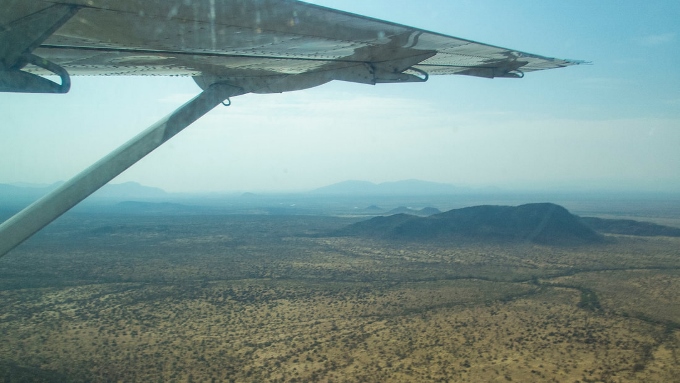
Over the Great Rift Valley
Our flight from Rhino Camp to Lion Camp was a twelve-passenger single prop plane that made two stops as we flew across the Great Rift Valley. Each time we dropped off or picked up passengers. In less than 90 minutes we touched down on a large grassy field in the Maasai Mara region of south Kenya.
There we met our hosts and boarded a Land Cruiser for the ride to Lion Camp. What would we see during our next four days? As the short ride into camp demonstrated, it would be plenty.
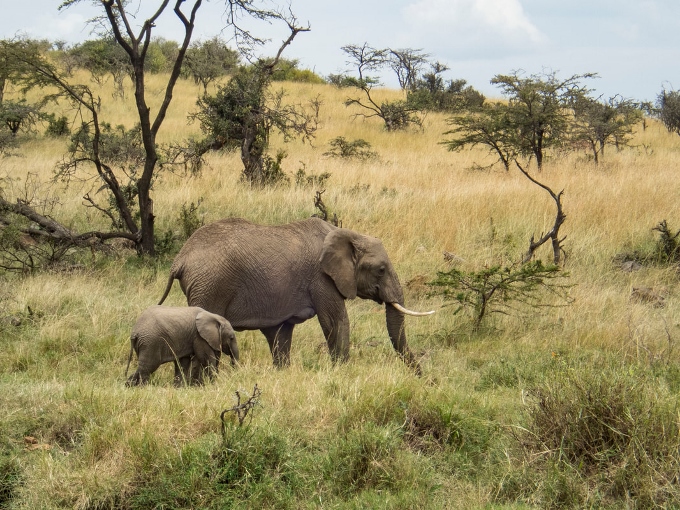
First Greeters at Lion Camp
We would not be in the vehicle long before we reached camp, less than 20 minutes, but before we were far from the landing strip we came upon two sets of elephants feeding their young along a meandering stream. One mother was alone with her calf. The other had company. If you look closely at either picture, you can see that the mother is still nursing.
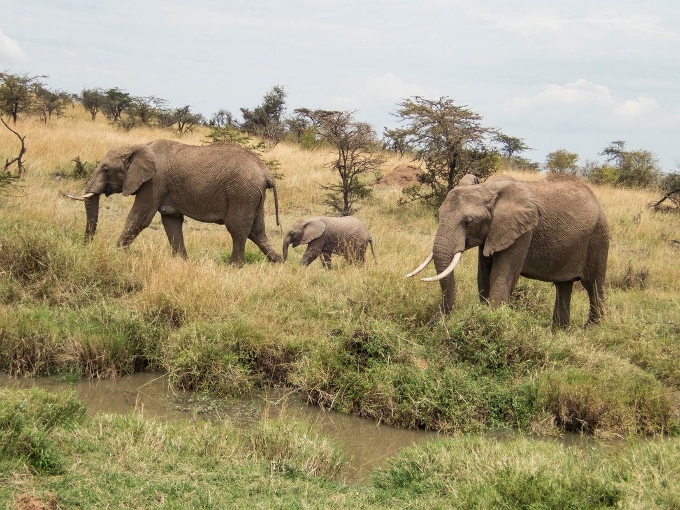
More Greeters Down the Road
Shortly after this welcome we continued on and followed the road past a watering hole. There, equally disinterested in our progress, were the three cheetah shown above and below.
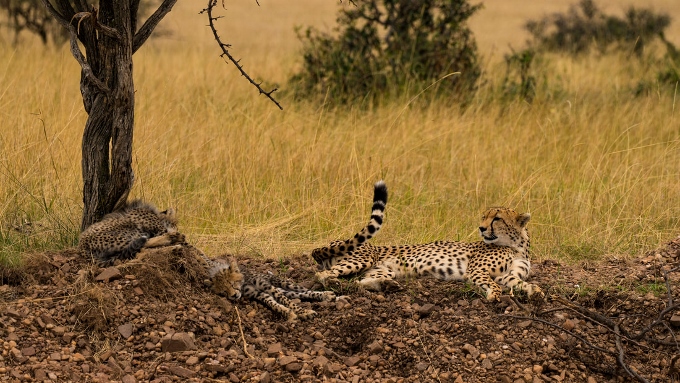
Noise in the Grass?
We arrived in camp in time for lunch and then settled into our tent. As with every other camp, our hosts were gracious and attentive. And, like the other camps, the management and staff were all Maasai.
This camp was set up beside a river that was home to a family of hippos. The guest tents were arranged to face out upon a vast plain of grass into the conservancy. Lions and elephants and other game would fill the nights with sound.
We were at Lion Camp. The afternoon game drive would start at 4 o’clock.

Postscript: I thought about including the names from Bill Watterson’s great comic strip Calvin and Hobbes in the title because the young cheetah’s pose above so reminded me of Hobbes in the comic strip. Maybe all cats sleep this way but the similarities came to mind immediately when we saw the cheetahs lounging outside Lion Camp. But since Hobbes is imaginary and a stuffed Tiger, I decided the allusion to Hobbes would be lost on most.
First published 17 Jan 2019. All photos and text are © Clinton Richardson. All images are from his galleries at TrekPic.com
About Clinton Richardson
Clinton Richardson has been writing and taking photographs for decades. His books include the critically acclaimed 5th edition Richardson’s Growth Company Guide 5.0 and the award-winning book about social media and ancient coins called Ancient Selfies. His images, including images taken on his trip, can be viewed at TrekPic.com. His Venture Moola blog can be viewed at Readjanus.com.
See Other Blogs in this Series:
- Safari Countdown: Prepping for Kenya
- Safari 1: The Hunt
- Safari 2: Off to Nairobi
- Safari 3: Tented Camps & Conservancies
- Safari 4: Passports in His Underpants
- Safari 5: Night Lions to Amboseli
- Safari 6: Amboseli to Selenkay
- Safari 7: Pooh on You
- Safari 8: Eaten by a Lion?
- Safari 9: The Maasai
- Safari 10: On the Move
- Safari 11: Crash on the Grass
- Safari 12: Sundowner Surprise
- Safari 13: Stalag Panzee
- Safari 14: Bump in the Night
- Safari 15: Dry Season Showers
- Safari 17: Distracting His Highness
- Safari 18: How to Eat a Tree
- Safari 19: Hunting with Children (well, cubs!)
- Safari 20: Blue Jean Symphony
- Safari 21: African Nights
on Friday 18th January 2019 at 11:45



